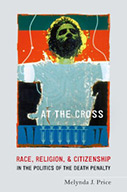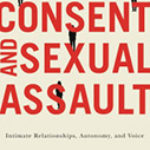At The Cross: Race, Religion, & Citizenship in the Politics of the Death Penalty

Author: Melynda J. Price
Publisher: New York; Oxford, UK: Oxford University Press, 2015. 232p.
Reviewer: Whitley Kaufman | July 2015
There is no discussing the issue of criminal justice or the death penalty in the United States without mention of the problem of race, and perhaps nowhere is this more true than Texas. Melynda Price’s book based on her dissertation attempts to present the death penalty issue from the perspective of African Americans. She argues that, for blacks in the United States, the death penalty has an especially potent symbolism, given the legacy of slavery, Jim Crow, and especially lynching. The death penalty functions, she argues, as a measure of the citizenship and inclusion or lack thereof for blacks; it is a “metric” blacks use to “measure the value the state places on their collective lives” (12). Price in her brief book focuses on the Houston area, which is arguably the epicenter of the death penalty in the United States, for it executes more people than most states (11). Those of us not from Texas probably have difficulty grasping the symbolic force of this issue. Price quotes George W. Bush’s justification for not issuing a pardon to Karla Faye Tucker: “I have concluded judgments about the heart and soul of an individual on death row are best left to a higher authority” (39). The logic is about as upside-down as one could get: we should let an execution go forward, because it is not our place to play God by stepping in with a pardon!
Price pays particular attention to the problem of race-based exclusion of blacks from jury participation in Texas, arguing that the right to serve on a jury is a basic measure of full civic participation. She describes some of the more remarkable and ingenious techniques used by prosecutors to avoid picking blacks as jurors, including the “jury shuffle,” which allows either party to request that the court clerk? shuffle the jurors’ cards so as to randomize them. Price suggests that prosecutors use this technique to ensure that blacks are moved to the end of the jury line, since most jurors are selected from the front of the pool. She also relates how Texas prosecutors have long used different prefatory remarks for prospective white and black jurors, ostensibly to reveal the jurors’ views about the death penalty. She gives an example of how a prosecutor justified the removal of the sole black from a jury by reference to the jewelry he was wearing, i.e. his “bling” (60). All of this, she reasonably argues, makes blacks feel excluded and devalued in the justice system.
Price devotes a chapter to a criticism of the practice of Batson hearings, the procedure devised by the courts to ensure that prosecutors were not misusing their peremptory challenges based on racial criteria. She argues that Batson rituals have proved to be wholly ineffective, a mere empty ritual, as prosecutors can always come up with alternative explanations of their racially exclusionary choices (among which is the fact that blacks are more likely to oppose the death penalty than whites). Again, this results in blacks feeling excluded from full participation. However, here Price ventures a much stronger thesis. Given that Batson hearings are a “weak legal instrument,” Price then says: “the next question is what other purpose they can be fulfilling” (53). Her answer is that the hearings have a “ritual,” symbolic function: the “definition of social status” (54). Black bodies, she writes, especially when they are male, “make a better sacrifice at the altar of state power” (54).
Price appears to slide between two distinct meanings of ritual: first, ritual in the sense of empty, external gesture (which may well describe the Batson hearing), and second, ritual in the sense of deliberate expressive symbolic communication. Her suggestion that the latter is the “logical explanation” of the ineffectiveness of the Batson hearings is puzzling. Perhaps all she means is that blacks take it as having that symbolic meaning. However she seems to make the far stronger claim that the hearings really do have that purpose – that since they are a legally ineffective tool, they must really be aimed at serving a symbolic purpose (53). But the ineffectiveness of the Batson hearings in curbing racial discrimination does not mean that there must be an ulterior, sinister purpose. A far simpler explanation is that Batson hearings are yet another example of a well-intended yet ineffective legal solution to a real problem. It would hardly be the first case where procedural solutions to a problem did not work as planned. In practice, it is practically impossible to have peremptory challenges and at the same time ensure they are never used in a discriminatory manner. Likely the only solution is to give up peremptory challenges altogether, a solution that is unlikely to happen and that Price does not endorse.
Black opinion on the death penalty is perhaps less monolithic than Price suggests. Price claims that blacks “strongly oppose” the death penalty (144), and she cites a 2007 study indicating that 55% of blacks oppose the death penalty while only 39% support it. However, the data drawn from the Houston Area Survey, which Price heavily relies on in her book, show something different (and recall Houston is the epicenter of the death penalty in the US): 52% of blacks oppose and 48% support. This is close to an even division, and does not justify her claim that blacks “strongly oppose” capital punishment (note also that 53% of black men in the Houston area, a majority, support the death penalty). It also complicates Price’s claim about the death penalty as a symbol: for those blacks who support the death penalty, it may be a symbol of justice rather than of oppression and exclusion.
Why do almost half of blacks in the Houston area support the death penalty, despite the widespread perception of racial bias? One answer may be an area that Price’s book tends to neglect, that blacks are disproportionately the victims of crime, especially violent crime. In her conclusion, Price mentions a black man who fatally shot five black females, including three little girls. She says that we do not have “details about the lingering impact of this crime on the neighborhood and the residents where this crime took place. The missing details are exactly the factors that form African American perspectives about the death penalty” (138). But that perspective is just what is largely absent from this book; we hear of the right not to be executed by the state, and the right to serve on a jury, but very little about the right to be free from violent crime. Perhaps almost half of Houston blacks support the death penalty because they are the ones that pay the highest price for violent crime.
Price claims that there is a “vastly disproportionate representation” of blacks on death row (144). This is certainly true with respect to the percentage of blacks in the population, but it is not obviously disproportionate with respect to the rate at which blacks commit violent crime: according to Wikipedia, blacks represent 41% of death row inmates, but commit 52.5% of homicides in the U.S. (and 93% of black homicide victims were killed by blacks). This is by no means to deny the existence of racial bias in the criminal justice system, but it does show that the problem goes far deeper than that. Obviously one would need to parse these figures very carefully to understand what is going on, but one thing these figures suggest is that the problem is not simply a matter of black versus white, as it is blacks who bear the brunt of most violent crime by other blacks.
Price ends her book on a cynical or despairing note, relating how blacks articulate their unique experience “even if they are the only ones who are listening” (145). But perhaps the problem is not that no one is listening, but that people increasingly recognize that there are no easy solutions to the problem of race in America. The Civil Rights movement, the Affirmative Action era, and the election of Obama, as important as they were, did not produce the utopia of equality and racial harmony that many hoped for. Price herself in this book gives few practical solutions. She says that the Batson process is “less fair and just than it could be” (67), but doesn’t tell us how to make it better. At one point, she endorses the position of radical philosopher I.M. Young that “Every valid social and political norm and rule (every law) must meet the condition that [it would be] accepted by everyone concerned” (118). But she gives no guidance as to how it would ever be possible to meet this wildly impractical ideal, that every law must be acceptable to every individual.
Price calls for abolishing the death penalty, but even if that were to happen, it is unclear how much difference that would make. The death penalty is administered to only a very small number of people each year, most of them white (57%). Since 1976, there have been about 1400 executions in the U.S., which comes to around 36 a year. It seems unlikely that eliminating capital punishment would do much to make blacks feel like full citizens of the United States (recall also that many blacks support the death penalty). Moreover, eliminating the death penalty would do nothing to address the far more intractable problem of the vast number of black prison inmates and the vast number of black crime victims. This is not to deny the important symbolic significance of capital punishment, especially to African Americans. But even if the symbol were to disappear, the problems that it symbolizes would not.
Whitley Kaufman, Chair and Professor, Department of Philosophy, University of Massachusetts Lowell


